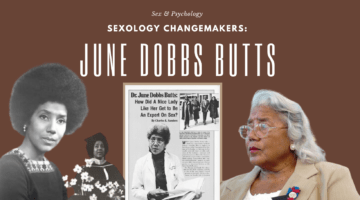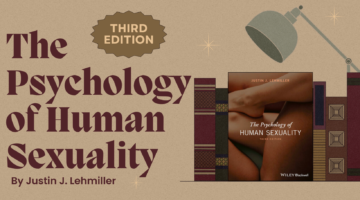5 Things Americans’ Google Searches Have Taught Us About Sex
March 20, 2019 by Justin Lehmiller
In the last few years, Google Trends has become a favored research tools of sex scientists. Because not everyone is willing to participate in sex studies for various reasons, Google searches offer a handy means of looking at what a broader swath of the population thinks about sex. The appeal doesn’t stop there, though.
We also know that people don’t always answer survey questions honestly (even when they’re guaranteed anonymity) due to fear, shame, and embarrassment. For instance, some people may not honestly report their turn-ons because they’re embarrassed, while others might lie about how many people they’ve had sex with in order to look good to the researcher (some might overreport, while others might underreport). When people go to Google, however, they have a powerful incentive to tell the truth: if they don’t, they won’t find what they’re looking for.
Google searches are therefore thought to be very revealing because they can give us a glimpse into the things that people might not otherwise be willing to share. Several research papers have been published recently that explore the contents of Americans’ Google search histories. Here are five of the most fascinating things we’ve learned so far from this unique research tool.
1.) Interest in consensual non-monogamy is on the rise. Over the last ten years, Americans have increasingly searched for information about different types of consensual nonmonogamy, but especially open relationships and polyamory (and cuckolding, too). This isn’t necessarily to say that Americans are more open to practicing consensual nonmonogamy than ever—however, surveys suggest that a large percentage of the population would like to try it.
2.) Searches for pornography and prostitution peak in the summer—but also around the winter holidays. Our searches for sex-related information fluctuate across the year, but the two peak times people reliably search for pornorgraphy and prostitution are in the early summer months (June and July) as well as the winter holidays (late December to early January). These summer and winter search peaks are thought to occur for different reasons. See here to learn about the summer peak and here to learn about the winter peak.
3.) People in the most religious states search for the most porn. One study found that Google searches for the word “porn” (which, while not very creative, is actually the most common word people use when searching for online pornography) are related to several indicators of religiosity in a given state. These include the size of the Evangelical Protestant population, as well as the number of people who report believing in God. Regardless of indicator, the more religious the state, the more porn searches take place there. There are at least three potential explanations for this finding, which you can read about here.
4.) Our porn searches change following major elections. Research has found that porn searches changed during the week following the 2004, 2006, and 2008 United States elections. Specifically, they were higher in states that voted for the prevailing political party than they were in states that voted for the losing party. So, in 2004, there were more porn searches in so-called “Red” states than there were in “Blue” states following President Bush’s victory; by contrast, there were more porn searches in Blue states than in Red states in 2008 following President Obama’s victory. Why is that? Scientists think it may be a function of the challenge hypothesis, which refers to the idea that our testosterone levels increase during competition. However, they rise faster for people who win compared to people who lose. Just watching a competition can lead to similar hormonal changes. These changes, in turn, are thought to lead to behavioral changes, which may include increases in both aggressive and sexual behaviors. More searches for porn could therefore be just one of many possible outcomes.
5.) Google searches for STD-related information are linked to states’ STD rates. One study found a positive correlation between searches for gonorrhea and a given state’s gonorrhea rate. What this means is that in states where there are more infections of a given type, there tend to be more searches related to that particular STD. Why is this important? It means that sexual health researchers just might be able to look at Google searches as an indicator of potential changes in infection rates. In other words, our internet searches could potentially help scientists to identify STD outbreaks in a faster and more cost-effective way than ever before.
Want to learn more about Sex and Psychology ? Click here for previous articles or follow the blog on Facebook (facebook.com/psychologyofsex), Twitter (@JustinLehmiller), or Reddit (reddit.com/r/psychologyofsex) to receive updates. You can also follow Dr. Lehmiller on YouTube and Instagram.
Image Source: Photo by Charles ?? on Unsplash
You Might Also Like:

Dr. Justin Lehmiller
Founder & Owner of Sex and PsychologyDr. Justin Lehmiller is a social psychologist and Research Fellow at The Kinsey Institute. He runs the Sex and Psychology blog and podcast and is author of the popular book Tell Me What You Want. Dr. Lehmiller is an award-winning educator, and a prolific researcher who has published more than 50 academic works.
Read full bio >


